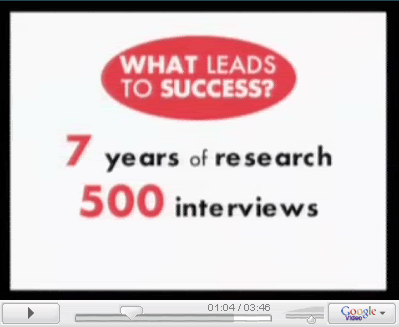Dear Friends,
One of our readers asked, "Jeff, I want to know if there's a way to break bad news to a client without losing the client relationship."
Good question! Is there an effective way?
Yes there is, but since I don't know any more about thecircumstances than this question, I'll answer it in general terms.
Let me also add that, although there may be a process todeliver bad news, you will not always be able to keep the clientrelationship you currently have.
It may improve, it may deteriorate. One thing is for certain, it willchange. What you do and how you do it will affect the outcome.
It's up to you.
With that said, let's see if we can cover a few broad situations
Bad news can come in a variety of packages. Here are a few:
TIME.
You can't complete a task or job in the timeyou promised or scheduled.
COST.
The original rate cost or price you offeredcan't be done.
MISUNDERSTANDING.
The customer has misunderstood the benefits, the program or the details of what you offered.
MINOR PROBLEMS.
There are always minor problems and it's best to address these before they become big problems.
YOU.
You may have failed to ask all the necessaryquestions or neglected to verify information before representing a proposal based on it.
OTHERS.
Someone may have changed their mind,position or direction.
STUPID THINGS.
Yes, someone may have done something stupid or irresponsible.
I'm sure there are more, but most types of bad news will fit into one of these packages.
BAD NEWS IS BAD NEWS AND NOBODY LIKES IT.
So, how do you deliver bad news?
Here's a 4 step process that is easy to remember.
1. Let the customer know immediately.
2. Apologize, first.
3. Don't blame.
4. Tell the customer what you can do, not what you can't.
It's that simple. Here are a few tips that might help you.
Do it immediately. Don't wait. Never let the customer find out before you tell them.
Deliver bad news in person if you can. Sit next to your client not across.
Apologize first and in a sincere and compassionate tone and manner even if it's not your fault.
Let your customer know that what happened is not a regular occurrence.
If there's a misunderstanding, you may say something like this, "I'm sorry for the misunderstanding, let's go over everything again."
Reward the customer with an "offset perk." By example: At TGI Fridays if a dinner isn't served on time, the dinner is free.
In our businesses something as a small token can be offered.
Possibly the cost of the application fee or a home warranty program.
Follow up later that evening or the next day.
Remember what the customer really wants is a solid solution to the problem.
Before you have to break some bad news evaluate the situation, explore the options and then, together with your customer, you can execute a plan.
Evaluate, Explore, Execute - Be a professional.
Now here's a tip that will keep you out of "customer jail."
We relay information all the time. Whether it's a rate and program, or zoning and permitted uses for a property, our words are very important. Being certain of what we say and what is said is understood by the customer is critical.
This can eliminate 99% of the bad news issues that arises from inadequate, partial or even negligent information that is used for the basis of a statement of fact.
My first Boss told me these years ago:
When you are representing important information to a customer, information a customer will rely on and act
upon, be certain you know the information first hand, in writing, before you make a representation.
As he used to say, "Is it what you know you know or is it what you think you know?" Be certain you know what you know. By example: "I'm told the zoning is R-1 but we can't be certain until we get it in writing from the town."
This has served me well over the years.
Delivering bad news isn't fun, but it is a part of the job.
I hope these 4 steps and few tips will give you a good way to deliver bad news.
Thanks for spending 3 minutes with me...
The best is yet to be!
Your Trusted Advisor For Life
Jeffrey Stanton
You read Jeffrey's Journal every week because you, like me want the best for yourself.And you, like me want to build a strong referral based business.Who else like you, like me loves referrals that you can share this blog with right now?


































No comments:
Post a Comment